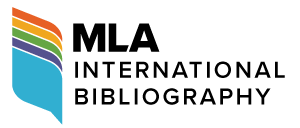Gaza on Screen, edited by Nadia Yaqub. Duke University Press, 2023, 277 pp.
Jarvis Curry
[PDF]
Review
In Gaza on Screen, edited by Nadia Yaqub, the reader is presented with a profound exploration of the visual narratives emerging from Gaza, a region synonymous with conflict, resilience, and the enduring struggle for identity. Published by Duke University Press in 2023, this anthology was released prior to the renewed armed conflict between Israel and Hamas-led Palestinian militant groups that began on October 7, 2023, in the Gaza Strip and Israel. This timing situates the book in a context that predates the recent escalation, allowing its essays to focus on long-standing dynamics within Gaza’s visual media landscape. The collection analyses how visual media, particularly film, represents the Palestinian experience, especially within the context of Gaza’s ongoing struggles under siege and occupation. By dissecting various films, videos, and other visual content, the contributors to this volume examine the multifaceted ways in which Gaza is portrayed on screen, revealing the power of media as both a tool of resistance and a mechanism of survival.
The book is meticulously organised into thematic sections, focusing on different aspects of Gaza’s cinematic representation. These sections provide a comprehensive analysis of visual media’s political, cultural, and social contribution to shaping the global perception of Gaza. The anthology moves fluidly from the historical and political context provided in the introduction to the detailed analyses of individual films, culminating in an afterword reflecting on the broader significance of these visual narratives.
The Political and Historical Context of Gazan Cinema
The opening chapters of Gaza on Screen lay the groundwork for understanding the intricate relationship between Gaza’s historical and political landscape and its cinematic representation. The introduction by Nadia Yaqub (128) provides a sweeping overview of how Gaza has been depicted in global media, emphasising the role of Palestinian filmmakers in using film as a means of activism and resistance. Yaqub argues that these visual narratives are not just artistic expressions but vital components in sustaining Palestinian identity and community amidst continuous oppression. She highlights the evolution of Palestinian filmmaking from the early works of UN agencies focusing on the humanitarian aspects of the Gaza Strip to more politically charged films that confront the realities of occupation and siege (5).
A roundtable discussion follows the introduction in “Gaza Filmmaking in a Palestinian Context” (29–49), where prominent Gazan filmmakers, including Basma Alsharif, Mohamed Jabaly, and others, discuss the challenges and responsibilities of creating films in a region under constant threat. Moderated by Azza El-Hassan, this conversation delves into the ethical dilemmas filmmakers face, such as balancing the need to depict the harsh realities of life in Gaza while avoiding the pitfalls of victimization narratives. The filmmakers express a collective desire to portray Gaza as a site of suffering and a place of resilience, creativity, and complex human experiences. They also touch upon the limitations imposed by external narratives, often shaped by Western media, which tend to simplify or sensationalize the Palestinian struggle (32).
Viviane Saglier’s chapter, “Gazan Cinema as an Infrastructure of Care” (50–70), builds on these discussions by theorising Gazan cinema as a form of care work. Through the lens of Mohamed Jabaly’s documentary Ambulance (2016), Saglier argues that filmmaking in Gaza transcends mere documentation; it becomes an act of care that supports the community by preserving its self-representation. Jabaly’s film, which follows an ambulance crew during the 2014 Israeli bombing of Gaza, is presented as an example of how cinema can simultaneously serve the immediate needs of the community—by bearing witness to the violence—and contribute to the broader goal of sustaining Palestinian identity and agency (53). Saglier’s analysis highlights the dual role of these films as both testimonies of suffering and as tools for psychological and cultural survival.
Cinema as Resistance and Memory
The next thematic section of the book shifts focus to the role of cinema as a means of resistance and a repository of collective memory. In “Found Footage as Counter-ethnography” (71–91), Samirah Alkassim explores the use of archival footage in Palestinian cinema, particularly in the works of filmmakers like Mustafa Abu Ali and Basma Alsharif. Alkassim contends that reusing archival footage in films such as Abu Ali’s Scenes from the Occupation in Gaza (Mashahid min al-ihtilal fiGhaza 1973) is a powerful tool for countering dominant ethnographic narratives that have historically marginalised Palestinian voices (74). By repurposing these images, Palestinian filmmakers reclaim their history and assert their agency in documenting their experiences. Alsharif’s later works continue this tradition by challenging the viewer’s perception of Gaza, not as a static site of conflict but as a dynamic space where past, present, and future intersect in complex ways (80).
Kamran Rastegar’s chapter, “Rendering Gaza Visible” (92–113), further explores the theme of cinema as a site of memory and resistance. Rastegar examines how Palestinian films produced during the Oslo period grapple with the visual economy of the Nakba, the 1948 catastrophe that led to the displacement of hundreds of thousands of Palestinians. He argues that these films, including Michel Khleifi’s Tale of the Three Jewels (Hikayatul jawahiri thalath 1995), navigate the delicate balance between representing historical trauma and engaging with the contemporary political landscape of Gaza (94). Rastegar’s analysis underscores the importance of these films in preserving the memory of the Nakba while also critiquing the limitations of the Oslo Accords in addressing the ongoing Palestinian struggle (100).
The Cinematic Other: Gaza in Israeli Cinema
In the subsequent chapters, the book focuses on how Gaza is depicted in Israeli cinema and resistance videos. Yaron Shemer’s chapter, “So Close, So Far: Gaza in Israeli Cinema” (114–35), critically analyses how Israeli filmmakers portray Gaza and its inhabitants. Shemer argues that Israeli cinema often frames Gaza as a space of radical otherness, a place that is both geographically close yet culturally and politically distant (117). This ambivalence is reflected in how Israeli films navigate the tensions between proximity and distance, familiarity and estrangement. Films such as Ari Folman’s Waltz with Bashir (Vals im Bashir 2008) and Samuel Maoz’s Lebanon (2009) are examined for their portrayal of Gaza as a site of existential threat, where the Israeli self is constructed in opposition to the Palestinian other (122). Shemer’s analysis reveals the limitations of these films in fostering genuine understanding or empathy, as they often reinforce stereotypes and perpetuate a narrative of intractable conflict (126).
The theme of resistance is revisited in “Attending to the Fugitive: Resistance Videos from Gaza” (136–56) by Nayrouz Abu Hatoum and Hadeel Assali. This chapter focuses on using resistance videos produced by the Ezzedeen Al-Qassam Brigades, the military wing of Hamas. Abu Hatoum and Assali emphasise the strategic use of video as a form of militant resistance, highlighting how these videos document and disseminate the Palestinian struggle against the Israeli occupation (141). The chapter delves into the aesthetics of these videos, exploring how the filmmakers employ techniques such as low-angle shots and dramatic music to convey a sense of empowerment and defiance (145). The authors also discuss the broader implications of these videos, arguing that they serve not only as tools of propaganda but also as acts of testimony that bear witness to the ongoing violence in Gaza (149).
The Sensory Politics of Gaza
The following thematic grouping of chapters in Gaza on Screen explores the sensory dimensions of cinema and the politics of visibility and invisibility in the representation of Gaza. In “Sensory Politics of Return: Hearing Gaza under Siege” (157–71), Shaira Vadasaria examines the auditory aspects of the Great March of Return, a series of protests between 2018 and 2019. Vadasaria’s essay focuses on how sound—captured in videos of the demonstrations—plays a crucial role in the politics of protest. She argues that the soundscape of the protests, which includes the noise of drones, gunfire, and the demonstrators’ chants, serves as a powerful form of political expression that challenges the visual dominance of media coverage (160–62). Vadasaria’s analysis highlights the importance of considering the multisensory nature of protest in understanding the full impact of these events on both participants and observers (164).
Rebecca L. Stein’s chapter, “How to Unsee Gaza: Israeli Media, State Violence, Palestinian Testimony” (172–86), shifts the focus to the politics of visibility in Israeli media. Stein critically examines how Israeli media often works to obscure Palestinian suffering while reinforcing state violence. She analyses specific instances of media coverage during the 2008–09 Israeli military operation in Gaza, illustrating how Palestinian testimony is either marginalized or co-opted within Israeli media discourses (177). Stein argues that this selective visibility not only perpetuates a narrative that justifies Israeli actions but also dehumanises Palestinians by reducing their experiences to mere background noise in the larger geopolitical struggle (180).
Hatim El-Hibri’s chapter, “The Elisions of Televised Solidarity in the 2014 Lebanese Broadcast for Gaza” (187–206), explores the limitations of televised solidarity through the analysis of a Lebanese television broadcast during the 2014 Israeli military operations in Gaza. El-Hibri critiques the national narratives that shape and constrain the portrayal of Palestinian suffering in Lebanese media. He argues that while the broadcast was intended to express solidarity with Gaza, it ultimately reinforced Lebanon’s political agenda, limiting the potential for genuine empathy or support (193). The chapter critically reflects on how media representations of solidarity can sometimes fail to transcend national boundaries, instead reinforcing the very divisions they seek to overcome (195).
The Colonial Gaze and Its Legacy
The final section of Gaza on Screen addresses the legacy of the colonial gaze in the representation of Gaza and the broader implications of these visual narratives. Shahd Abusalama’s chapter, “Seeing Palestine, Not Seeing Palestinians: Gaza in the British Pathé Lens” (207–30), examines British Pathé newsreels from the 1940s through the 1960s. Abusalama analyses how these early cinematic portrayals of Gaza reflect and reinforce colonial and Orientalist narratives that have contributed to the marginalisation of Palestinians in the global imaginary (210). She argues that these newsreels, which were often shown in British cinemas before the main feature film, played a significant role in shaping Western perceptions of the Middle East, often depicting Palestinians as passive victims rather than active agents in their struggle for self-determination (217). The chapter underscores the enduring impact of these colonial narratives on contemporary media representations of Gaza (221).
The afterword by Helga Tawil-Souri, “Gaza Screened” (231–38), serves as a reflective conclusion to the anthology. Tawil-Souri discusses the broader implications of the essays in the volume, particularly how the visual representations of Gaza contribute to both global solidarity movements and local resistance efforts. She emphasises the importance of large and small screens as sites of struggle, where the power dynamics of visibility and invisibility play out (233). Tawil-Souri’s afterword highlights the potential for these visual narratives to challenge dominant power structures, offering a final meditation on the role of cinema in shaping the political and cultural landscape of Gaza (238).
Final Analysis
Gaza on Screen is a deeply impactful and timely anthology that offers a comprehensive exploration of the role of visual media in shaping the global perception of Gaza. The book is meticulously structured, with each chapter contributing a unique perspective that builds on the previous ones, creating a cohesive and multi-faceted analysis of Gaza’s cinematic representation. The thematic organisation of the chapters allows for a logical flow from the historical and political context provided in the introduction to the detailed analyses of individual films and media portrayals, culminating in an afterword that reflects on the broader significance of these visual narratives.
The book’s release is particularly relevant given the ongoing conflicts in Gaza and the broader Middle East, making it a crucial resource for understanding the complexities of how Gaza is portrayed in global media. The high-quality chapters provide well-researched and thought-provoking analyses that will appeal to scholars and general readers interested in film, media studies, and Middle Eastern politics. One of the strengths of the book is its readability. Despite the complexity of the subject matter, the essays are written in a clear and accessible style, making them engaging for a wide audience. The use of in-text citations and references is meticulous, adhering to academic writing standards while ensuring that readers can easily follow the arguments presented.
Gaza on Screen is an essential contribution to film and media studies, as well as Middle Eastern studies. It provides a nuanced and comprehensive analysis of Gaza’s representation on screen, offering valuable insights into the power of visual media to shape political narratives and influence public perception. The book is highly recommended for anyone seeking to understand the intersection of media, politics, and conflict in the modern world.
References
1. Abu Ali, Mustafa, director. Scenes from the Occupation in Gaza [Mashahid min al-ihtilal fi Ghaza]. Palestine Film Unit, 1973.
2. Alsharif, Basma, director. We Began by Measuring Distance. The 9th Sharjah Biennial Production Programme, 2009.
3. Folman, Ari, director. Waltz with Bashir [Vals im Bashir]. Sony Pictures Classics, 2008.
4. Jabaly, Mohamed, director. Ambulance. Filmhuset Tvibit, 2016.
5. Khleifi, Michel, director. Tale of the Three Jewels [Hikayatul jawahiri thalath]. BBC, 1995.
6. Maoz, Samuel, director. Lebanon. Sony Pictures Classics, 2009.
Suggested Citation
Curry, Jarvis. “Gaza on Screen, edited by Nadia Yaqub.” Alphaville: Journal of Film and Screen Media, no. 28, 2024, pp. 91–96. DOI: https://doi.org/10.33178/alpha.28.06
Jarvis Curry is Adjunct Professor of Graduate Business Studies at the University of the Cumberlands. Dr Curry’s scholarship includes publication in CINEJ Cinema Journal, Journal of Business Research, Financial Research Letters, Colour Turn, Journal of Media Economics, and the Journal of Children in Popular Culture.









